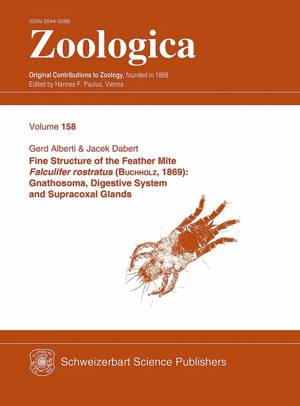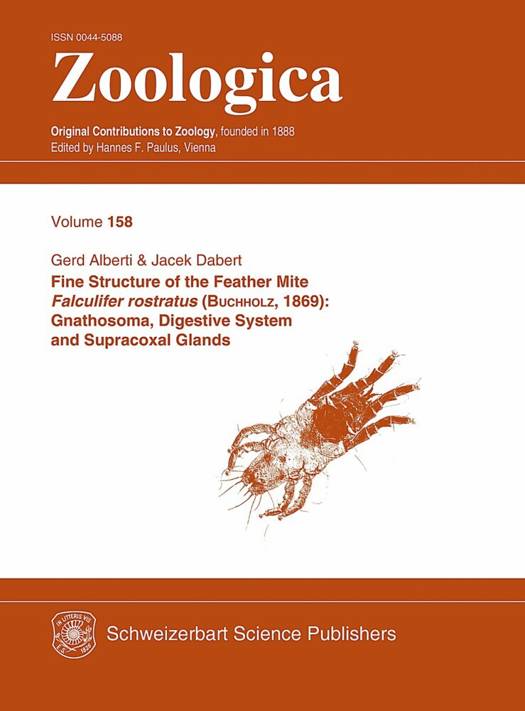
- Retrait en 2 heures
- Assortiment impressionnant
- Paiement sécurisé
- Toujours un magasin près de chez vous
- Retrait gratuit dans votre magasin Club
- 7.000.0000 titres dans notre catalogue
- Payer en toute sécurité
- Toujours un magasin près de chez vous
Fine Structure of the Feather Mite Falculifer rostratus (Buchholz 1869) (Acari, Falculiferidae)
Gnathosoma, Digestive System and Supracoxal Glands
Gerd Alberti, Jacek Dabert
151,95 €
+ 303 points
Description
The authors present the first detailed and superbly illustrated study of the fine structure of the feather mite Falculifer rostratus. In particular its mouthparts are described and discussed under functional and comparative aspects. Falculifer rostratus was first described by the Greifswaldian Zoologist Reinhold Buchholz in 1869 (under the name Dermaleichus rostratus) from the plumage of the stock pigeon Columba oenas. F. rostratus later became the type species of the family Falculiferidae which comprises 14 genera and about 45 species living exclusively in the plumage of columbiform birds. These mites belong to a large assemblage of astigmatid mites (Astigmata, Acari) of more than 2500 known species, called feather mites. Although feather mites are observed on almost all bird species as putative paraphages or parasites, their biology and internal morphology is poorly known. In this context the bimorphism of males occurring in this species, the heteromorphs carrying sickle-shaped chelicerae (hence the generic name), is also discussed. For the first time, the fine structure of sensory organs of all gnathosomal parts of a mite is studied and described using scanning and transmission electron microscopy. The new findings advance our knowledge of one of the key-characters of Acari, the gnathosoma. A second contribution describes the digestive tract in full, revealing its organization into distinct parts characterised by distinct cell types. Occasionally, peculiar microsporidian parasites in the midgut of a female mite were discovered for the first time. Finally, the supracoxal glands, characteristic of astigmatid mites and previously only poorly understood in terms of their very complex structure and putative function, are thoroughly treated here. Numerous fine structural details are revealed, among them peculiar muscle attachment sites, microtubule-like elements in certain sensory organs, and very specific extrusion poles of the supracoxal glands; these new findings may be of general relevance to students of animal fine-structure. This volume is of great relevance to biologists studying arthropod structure, in particular to acarologists and arachnologists. However, also parasitologists, microbiologists, ornithologists and researchers interested in host-parasite-coevolution will find stimulating new data.
Spécifications
Parties prenantes
- Auteur(s) :
- Editeur:
Contenu
- Nombre de pages :
- 150
- Langue:
- Anglais
- Collection :
- Tome:
- n° 158
Caractéristiques
- EAN:
- 9783510550456
- Format:
- Livre broché
- Dimensions :
- 230 mm x 310 mm
- Poids :
- 790 g

Seulement chez Librairie Club
+ 303 points sur votre carte client de Librairie Club
Les avis
Nous publions uniquement les avis qui respectent les conditions requises. Consultez nos conditions pour les avis.






